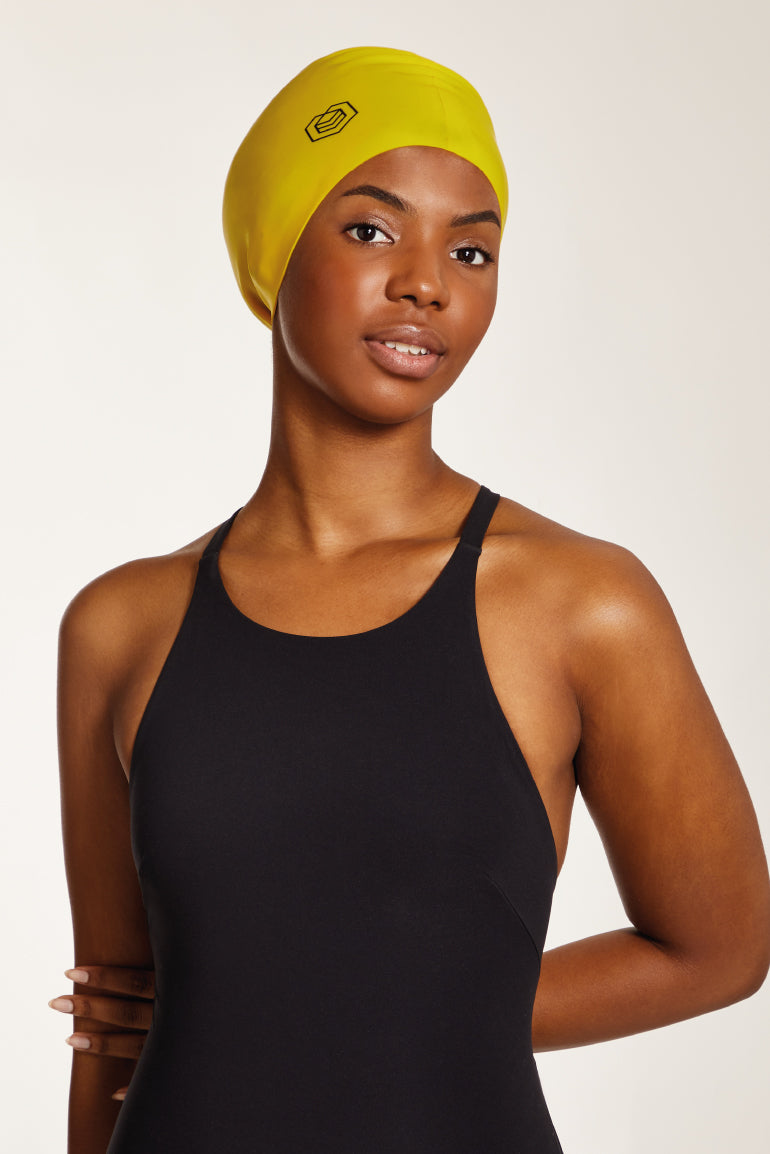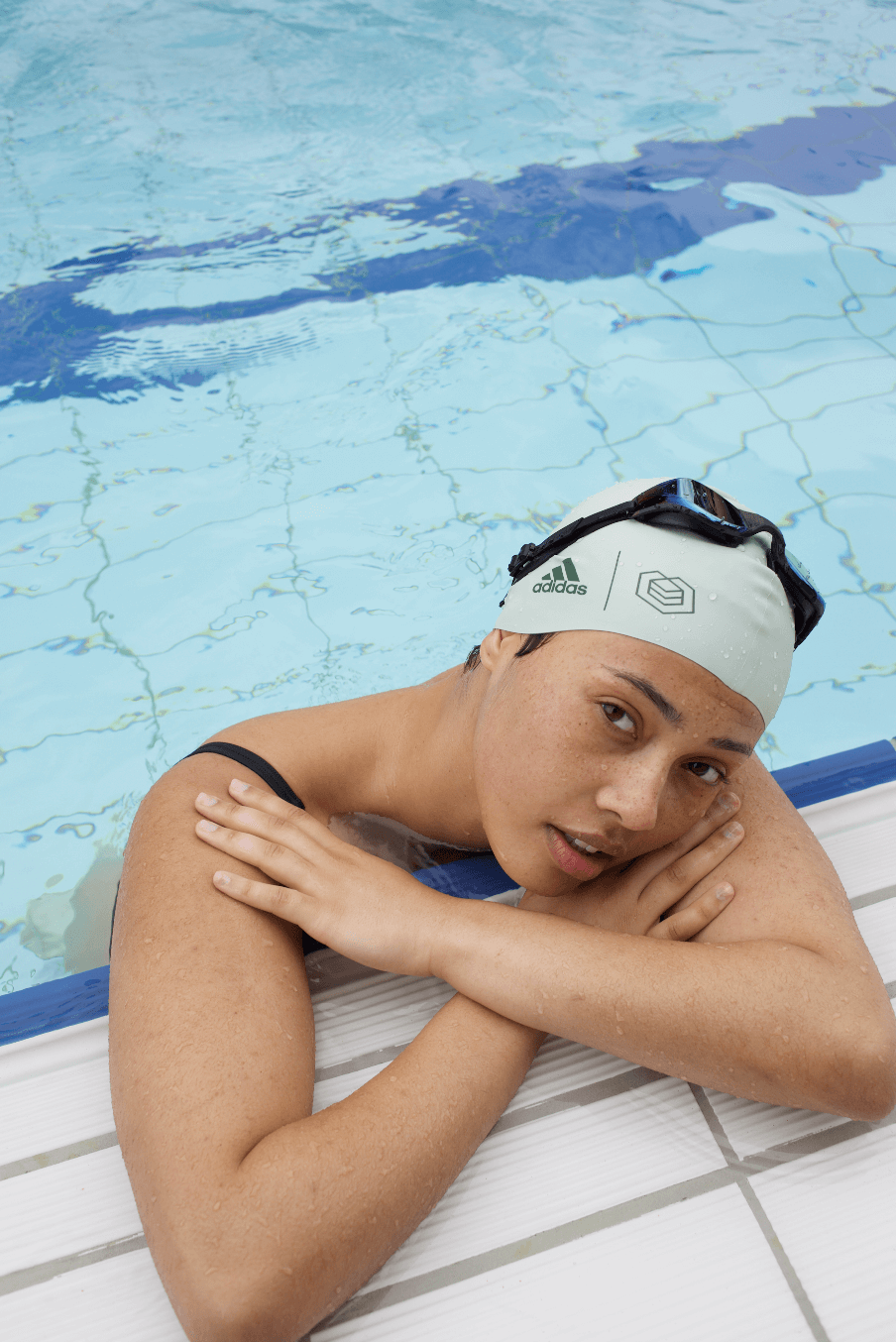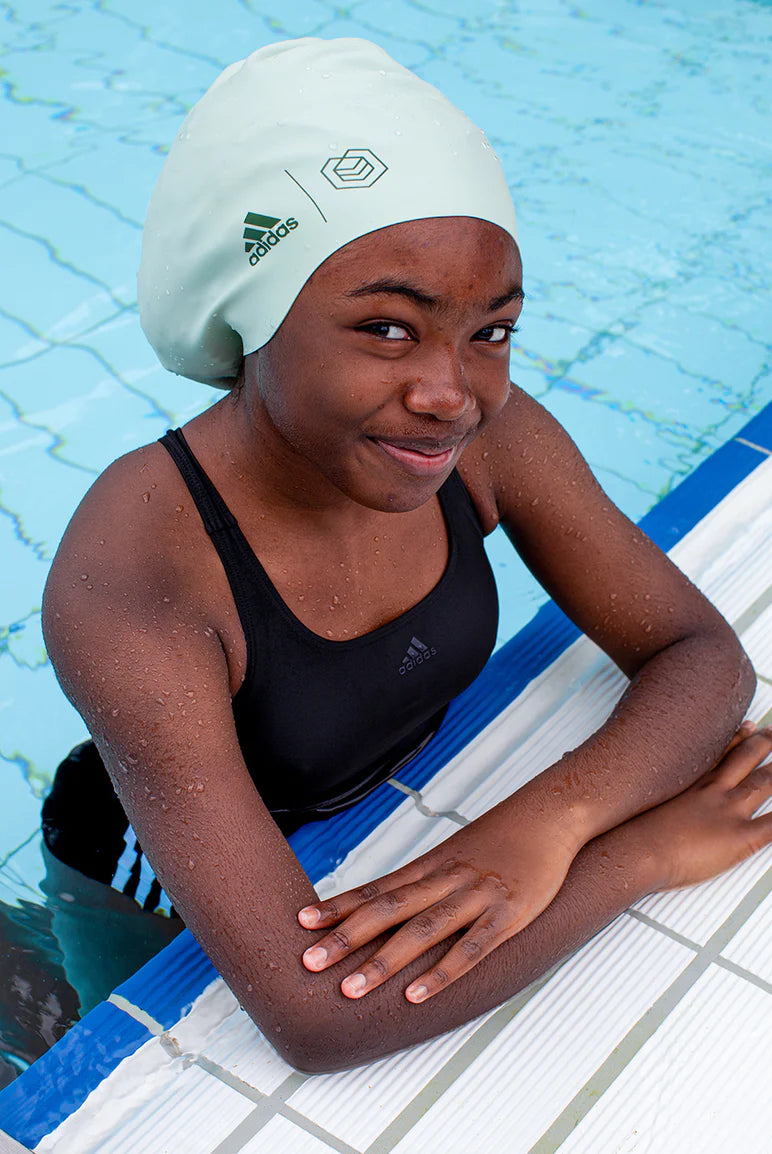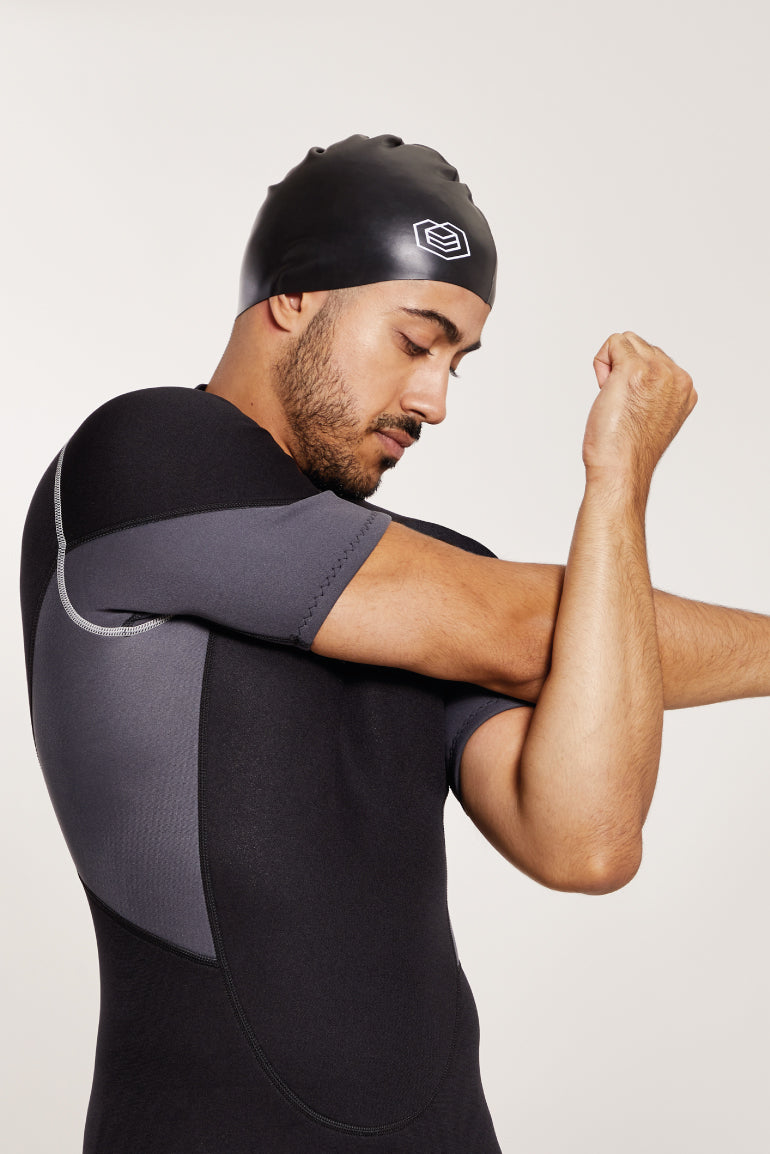The first time you bought a swimming cap, you probably grabbed the first one you saw.
But when you start to take a sport seriously, you'll find there's a little more to it than getting the cheapest equipment in the brightest colours.
Not all caps are created equal. And we've got the details to help you choose the right one:
Latex
Caps made from latex are generally on the thin side – which could be a good thing or a bad thing.
(And if you're unlucky enough to suffer from a latex allergy, then latex caps are always a bad thing!)
Because they're made from a thin material, they don't trap as much heat as some thicker caps. So if you're swimming in warm water (or in a hot climate), a latex cap could help you to stay cool while you're getting a workout.
But this thin material also means they're more likely to rip. And when you need to stretch a cap to take it on and off several times a week, you might find yourself buying a replacement sooner than you'd like.
Rubber
Rubber caps are the slightly thicker cousin of latex ones. And that means they're usually warmer and stronger than the thinner, more fragile latex caps.
But because they're made from a thicker material, that also means they're not as stretchy. So they can be a challenge to take on and off – and they can feel too hot when you're swimming in warmer waters.
(We should also point out that rubber is derived from latex. So if you're stuck with a latex allergy, you should avoid rubber caps, too!)
Spandex (Lycra)
The best thing about a spandex cap is that it's made from a softer, fabric-like material.
That means it's usually comfortable to slip on and off without snagging any hairs – which could make it tempting for people with long or voluminous hair.
But there's a downside here:
Spandex caps aren't waterproof, which means water flows through the material itself as you swim.
For some people, that's actually a bonus. It creates extra drag and resistance to help you train harder – and it should make things easier when you switch over to a more efficient cap for competitions and races.
But for anyone who cares about the health of their hair, there's a problem:
A cap that lets water and chlorine into your hair can do some serious damage. So if you're looking for a swim cap that can keep your hair strong and healthy, we'd recommend staying away from spandex completely.
Silicone
There's a reason why most Olympic swimmers wear a silicone swim cap.
In fact, there are loads of reasons:
For professional swimmers, the most important one is that silicone caps are hydrodynamic. (Think 'aerodynamic', but in the water.)
They're designed to be wrinkle-free, which means their smooth surface gives you the least amount of drag in the water.
They're also more strong and durable than most other materials. Silicone is tough and super-stretchy – and with the right care, a single cap can last you through years of daily use. This is especially useful for when looking to buy a long hair swim cap.
(And as a bonus, caps made from silicone are hypoallergenic – which means you won't need to worry about any nasty reactions.)
So which material is the best?
If you're looking for the best performance (and you're willing to invest in a cap that lasts for years), it's hard to make a case for anything that's not silicone.
Latex can keep you cool, but it won't last for long.
Rubber can keep you warm, but they're not easy to use.
Spandex can be comfy, but it doesn't protect your hair.
But a silicone swim cap ticks all the boxes. And we've got a whole range of swim caps for you to check out including our children's swim cap.






